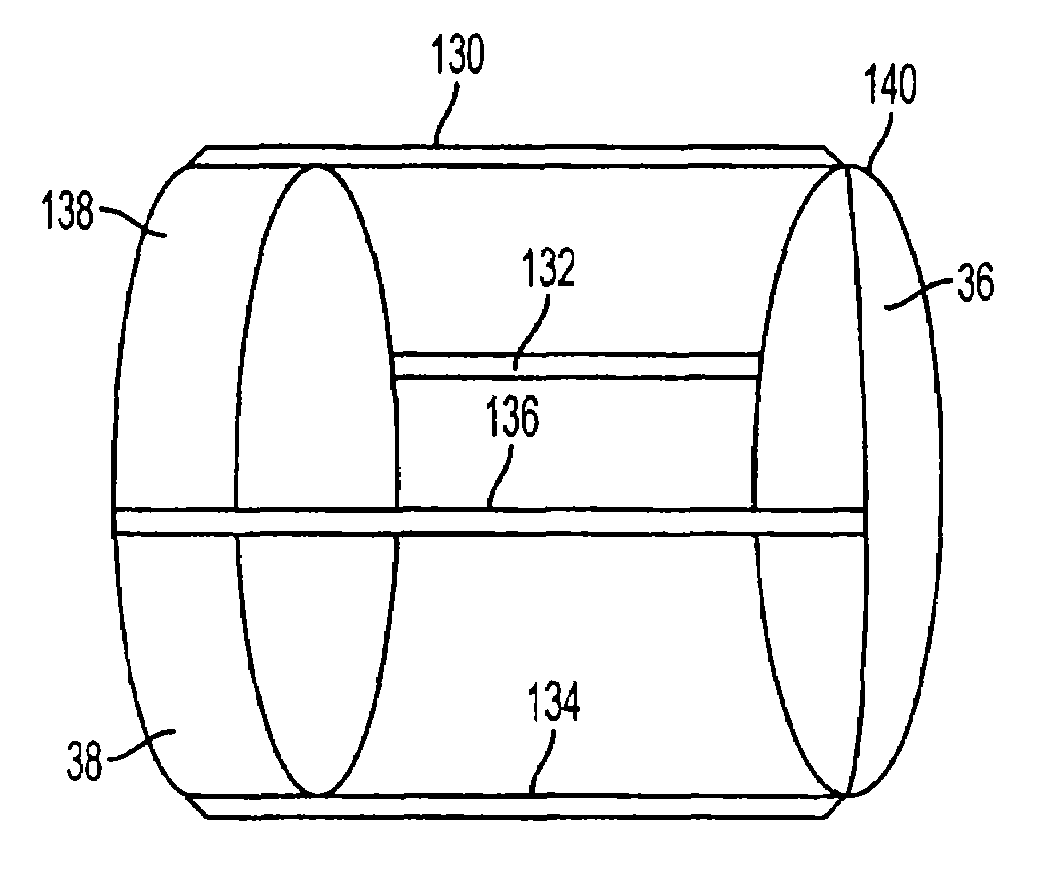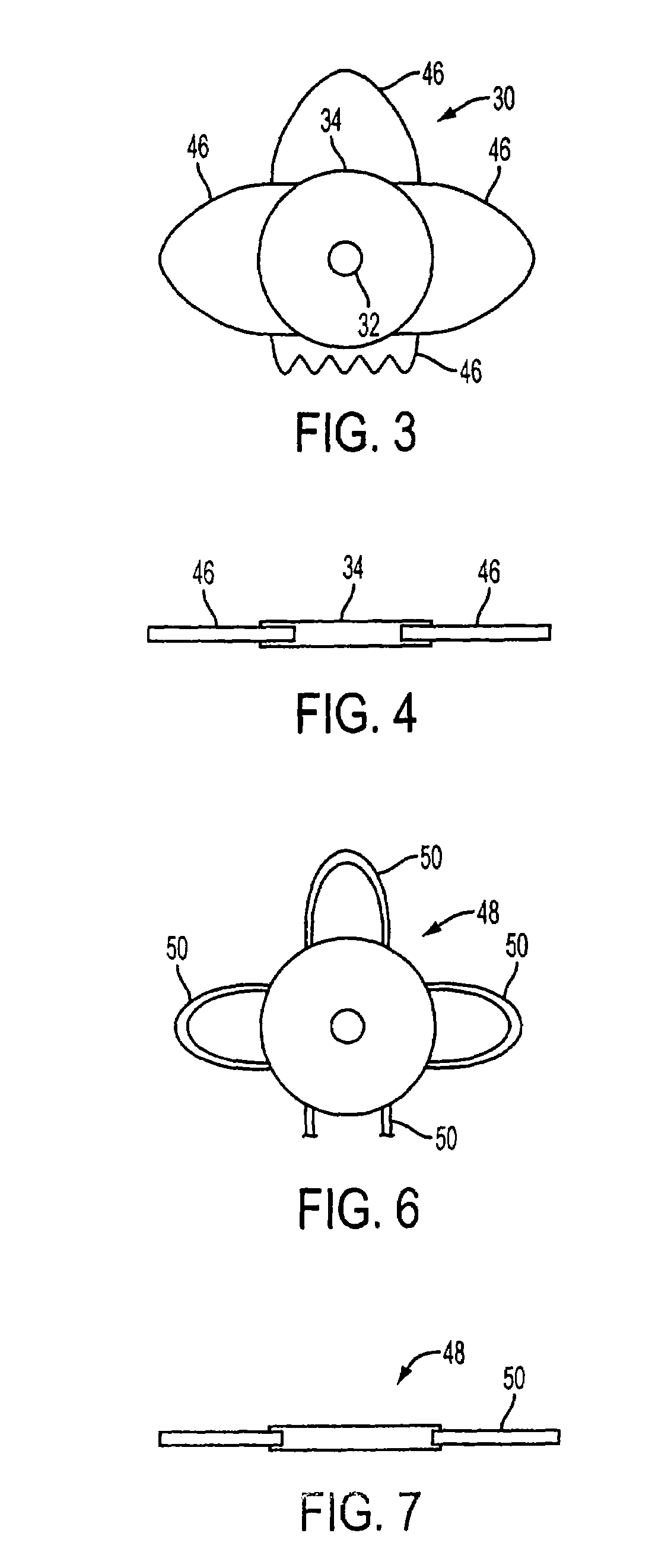Bifocal intraocular telescope for low vision correction
a technology of intraocular telescope and low vision, which is applied in the field of intraocular telescope for correction of low vision, can solve the problems of inability to increase the retinal image of a given object, inability to read and drive, and inability to accurately predict the effect of the eye,
- Summary
- Abstract
- Description
- Claims
- Application Information
AI Technical Summary
Benefits of technology
Problems solved by technology
Method used
Image
Examples
embodiment
of FIG. 10
[0046]FIG. 10 shows a fourth embodiment of the present invention. In this embodiment, the intraocular implant 78 has a telescope portion 80 attached to a peripheral portion 82. The peripheral portion 82 is placed directly onto the primary lens 84 and is attached to the ciliary sulcus 83 by haptics 85. The illustrated primary lens is a natural lens, but may also be an artificial intraocular lens. The telescope portion 80 preferably is formed from a flexible material, similar to portion 34. Additionally, telescope portion can be configured as tube 80 (FIGS. 12–14) having similar characteristics as portion 34 or it can be formed as structure or telescope portion 129 having struts or extension members (FIG. 18).
[0047]As shown in FIG. 18, each strut 130, 132, 134, 136 is attached to the periphery 138 of lens 38 (in any conventional manner, such as adhesive or any other suitable means) and extends to the periphery 140 of lens 36 and attaches thereto in the same or substantially ...
PUM
 Login to View More
Login to View More Abstract
Description
Claims
Application Information
 Login to View More
Login to View More - R&D
- Intellectual Property
- Life Sciences
- Materials
- Tech Scout
- Unparalleled Data Quality
- Higher Quality Content
- 60% Fewer Hallucinations
Browse by: Latest US Patents, China's latest patents, Technical Efficacy Thesaurus, Application Domain, Technology Topic, Popular Technical Reports.
© 2025 PatSnap. All rights reserved.Legal|Privacy policy|Modern Slavery Act Transparency Statement|Sitemap|About US| Contact US: help@patsnap.com



